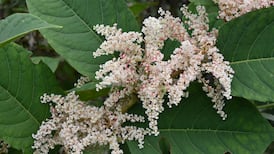As gardeners living in a world where exclusivity is often mistaken for desirability, it’s easy to overlook those widely available plants that can be relied upon to give a garden structure and seasonal interest without needing to be mollycoddled. We can sometimes be sniffy about the latter, slow to recognise that admirable traits such as resilience, hardiness, vigour, longevity and a ready ability to grow well with minimal intervention are all excellent reasons to prize these species above rarities with few of those same characteristics.
With that in mind, here’s a little shortlist of exceptionally reliable, versatile ornamental shrubs for the spring garden. Are they fashionable? Not really, although there are certainly signs of a comeback as gardeners search for clever ways to accommodate the challenges of climate change. Are they undemanding, pollinator-friendly and likely to flourish in the average Irish garden for many years? Yes, absolutely.
Forsythia x intermedia
Laugh all you like, but this old cottage garden favourite can be counted upon to fill the spring garden with a profusion of bright-yellow flowers, which open along its bare stems before the leaves appear. Forsythia ‘Lynwood Variety’ is one of the best, while others to look out for include the larger-flowered Forsythia ‘Goldrausch’. Both make tall, naturally sprawling shrubs (3m x 2m) that can be kept compact with a rigorous annual prune immediately after the flowers have faded. Alternatively, seek out the much more compact Forsythia ‘Mikador’, which reaches an average height and spread of 1.5m.
Ribes sanguineum (flowering currant)
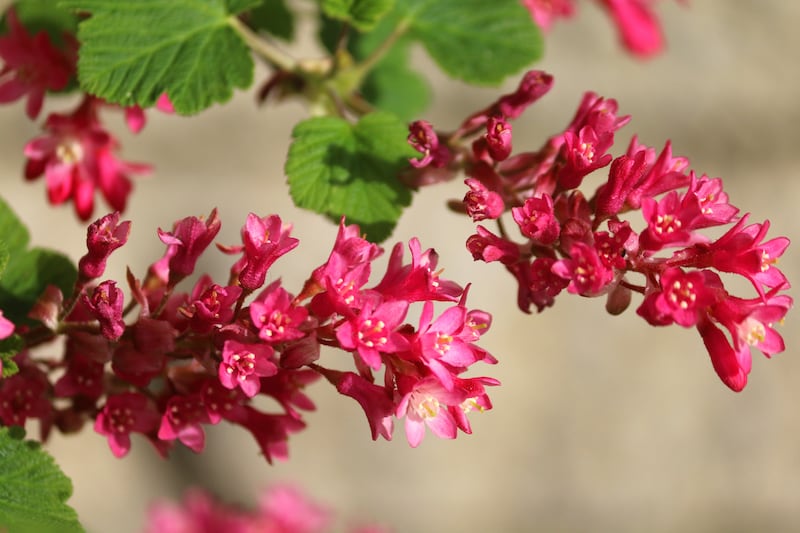
Another old reliable long associated with Irish cottage gardens, this deciduous shrub flowers abundantly in March-May, attracting early-emerging pollinators in their hordes. Classic varieties include the crimson-pink Ribes ‘King Edward VII’ (average height and spread of 2.5m) and the taller, dark-pink flowering Ribes ‘Pulborough Scarlet’ (3m x 2.5m). For something more subtle, seek out the blush-pink Ribes ‘Tydeman’s White’, the pink-tinged Ribes ‘Elkington’s White' and the white-flowered Ribes ‘White Icicle’. All can also be used to make a great informal flowering hedge.
READ MORE
[ ‘Which climbing plants are best for an east-facing house wall?’Opens in new window ]
Spiraea ‘Arguta’
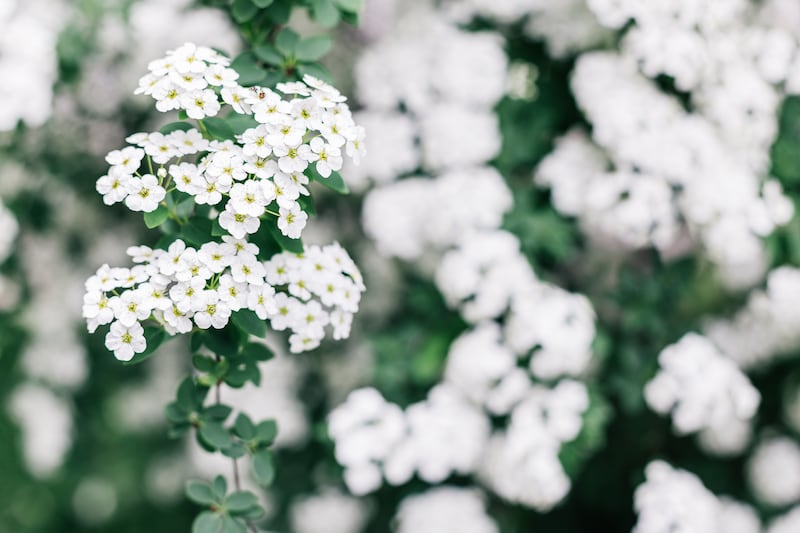
The arching branches of this hard-working deciduous flowering shrub (average height and spread of 2m), whose common name is ‘bridal wreath’ and which is beloved of florists, are covered in a massed display of tiny, starry white flowers from mid to late spring. All it asks for is a sunny spot in average soil and an annual prune immediately after its flowers have faded to help keep it floriferous.
Magnolia stellata (star magnolia)
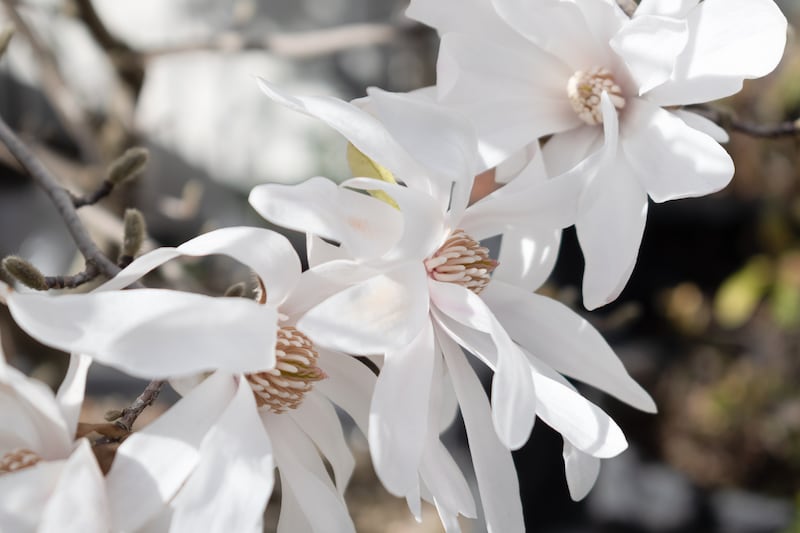
A great choice for smaller gardens, the star magnolia (height and spread, 3m) has a ghostly beauty all its own with white, star-shaped flowers that appear on bare branches in March-April. Underplant it with dainty spring-flowering bulbs such as the snowy-flowered Narcissus ‘Thalia’ and Erythronium ‘White Beauty’ along with hellebores to amplify the effect. A double-flowering form known as Magnolia stellata ‘Waterlily’ and the pink-flowered Magnolia stellata ‘Rosea’ are also both worth seeking out.
Viburnum tinus (laurustinus)
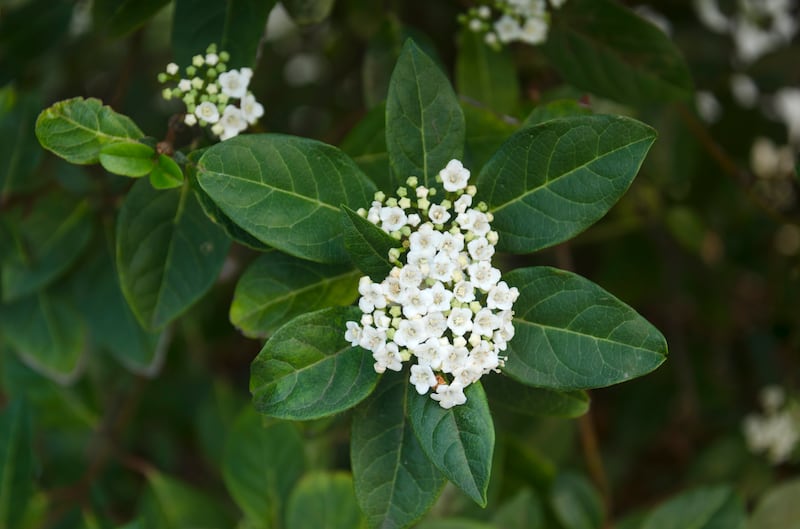
Yes, yes, I know, this tough-as-old boots species can inevitably be found skulking at the back of tired Victorian shrubberies, but the truth is that very few other hardy evergreen shrubs are as impressively resilient or as capable of tolerating windy seaside conditions, shade and hard pruning without protest, on top of which it flowers from late December right through to May. Grow it to the back of a border, or as a flowering hedge, or even as a container plant to provide a very useful year-round backdrop to other more obviously ornamental species. Named varieties include the pink-flowered Viburnum ‘Eve Price’ (height and spread of 2.4m) and Viburnum ‘Lisarose’ (3m) whose distinctive deep-red flower buds are followed by clusters of pale pink flowers. Metallic blue-black berries in autumn are another plus.
Osmanthus delevayi (Delavay osmanthus)
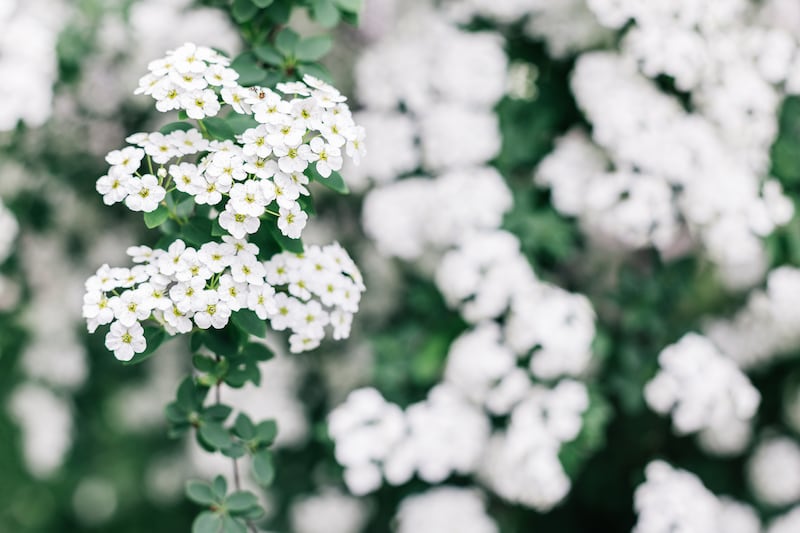
Another reliably unfussy, spring-flowering evergreen shrub, one of its great charms is its clusters of strongly scented white flowers, which appear in April. Happy in sun or partial shade and tolerant of exposure, it’s a great choice for the back of a sunny border, ideally close to an entrance where its perfume can be easily appreciated. Height and spread of 2.5m-4m.
Mahonia
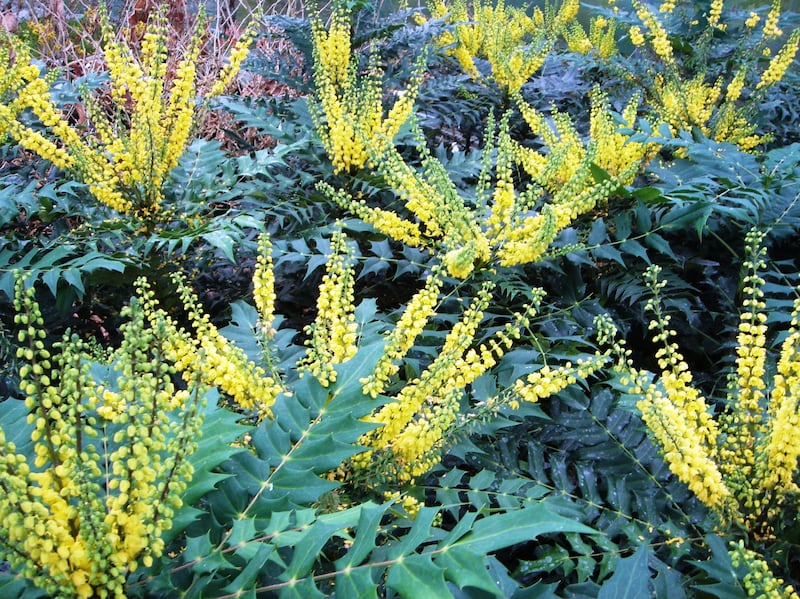
Handsome, architectural, with evergreen leaves and scented racemes of nectar-rich yellow flowers from late winter right through to mid-spring followed by trusses of purple-black berries, tolerant of most soils with an ability to grow in even deep shade ... what more could you ask for? The hybrid species Mahonia x media, first raised in the famous Slieve Donard nursery in Northern Ireland, is among the best and includes Mahonia ‘Winter Sun’ and Mahonia ‘Charity’. Also worth seeking out is the exceptionally elegant lomaria-leaved mahonia, Mahonia oiwakensis subsp. lomariifolia (try saying that quickly).
Euphorbia characias ssp. wulfenii (Mediterranean spurge)
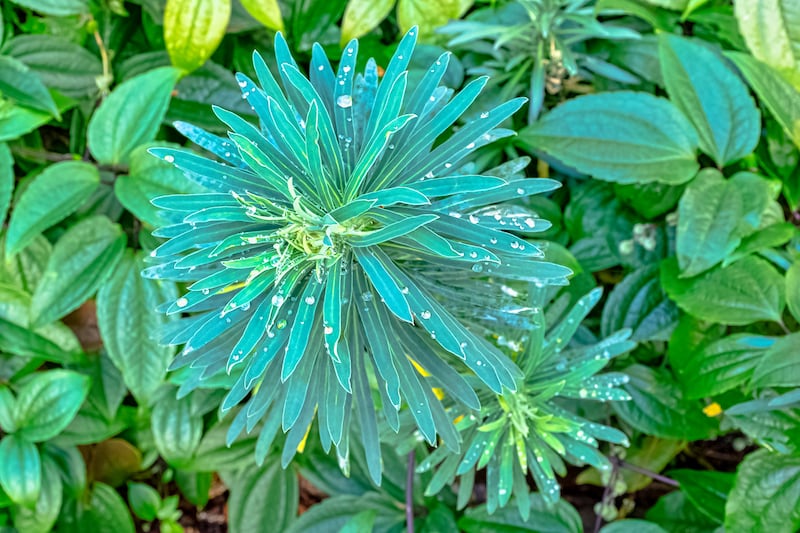
Although technically a sub-shrub and not as long-lived as the other plants on this list, it earns its place by virtue of its outstandingly statuesque growth habit, evergreen foliage, ability to tolerate the stoniest, most free-draining of soils and its wonderfully decorative heads of long-lasting lime-green flower bracts, which unfurl March-May. Many garden-worthy varieties with variegated leaves and flowers in shade of green, white and yellow are available but the subspecies still holds its own (height and spread of 1m).
Cornus mas (Cornelian cherry)
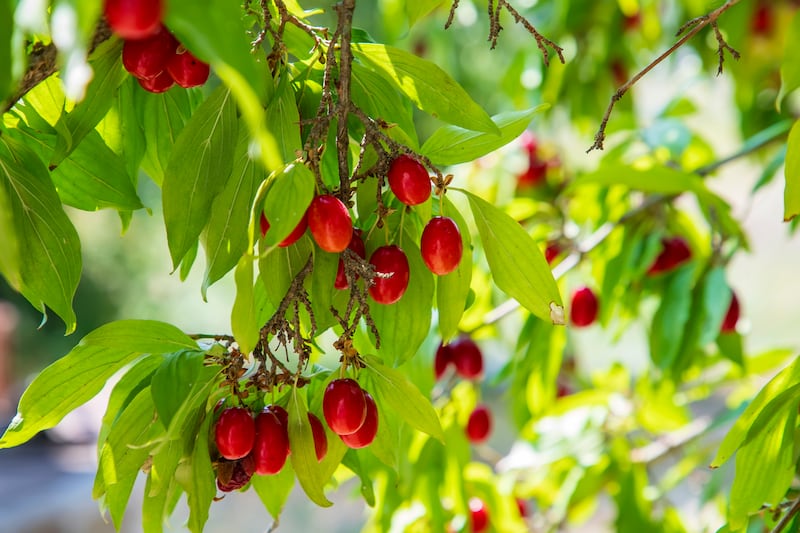
One for larger gardens, this spreading deciduous shrub has several seasons of interest but is best in spring when its bare branches are covered in tight clusters of tiny yellow flowers, followed by small red edible fruits in late summer. Happy in sun or partial shade and almost every type of soil as well as being exceptionally hardy, it’s a great alternative to the more fashionable but trickier witch-hazel. Height and spread of 3m-4m.
Sarcococca (sweet box)
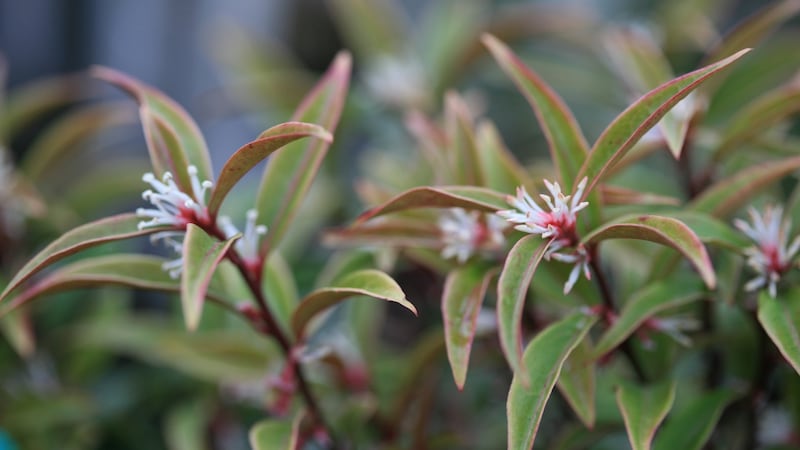
Another unflashy, very hardy, hardworking evergreen shrub that shines in early spring, this is a great choice for a small garden, with its tiny, pale, intensely perfumed flowers. Of the different species available, Sarcocooca confusa, Sarcococca digyna and Sarcococca hookeriana ‘Winter Gem’ and Sarcococca var digyna ‘Purple Stem’ are among the best.
This week in the garden
Keep a careful eye on any seeds sown under cover, making sure to avoid overwatering and ensuring that the emerging seedlings have sufficient protection from cold nights and chilly breezes and are positioned in a bright spot.
Give wisteria plants their winter pruning by cutting all of the summer-pruned shoots back to two to three buds.
Dates for your diary
Saturday, February 15th, and Sunday, February 16th (10am-5pm): Mount Venus Nursery’s annual Helleborus Days at the Mount Venus Nursery, The Walled Garden Tibradden, Mutton Lane, Dublin 16, D16 R972
Saturday, February 22nd: Crowne Plaza Dublin Airport Hotel Conference Centre in Northwood Park, Santry, Dublin D09 X9X2, ‘Building Resilient Landscapes for a Changing Climate’, the GLDA 2025 seminar with guest speakers Henrik Sjöman, Wendy Allen, Charlotte Hitchmough, Adam Whitbourn and An Marie Powell. glda.ie







